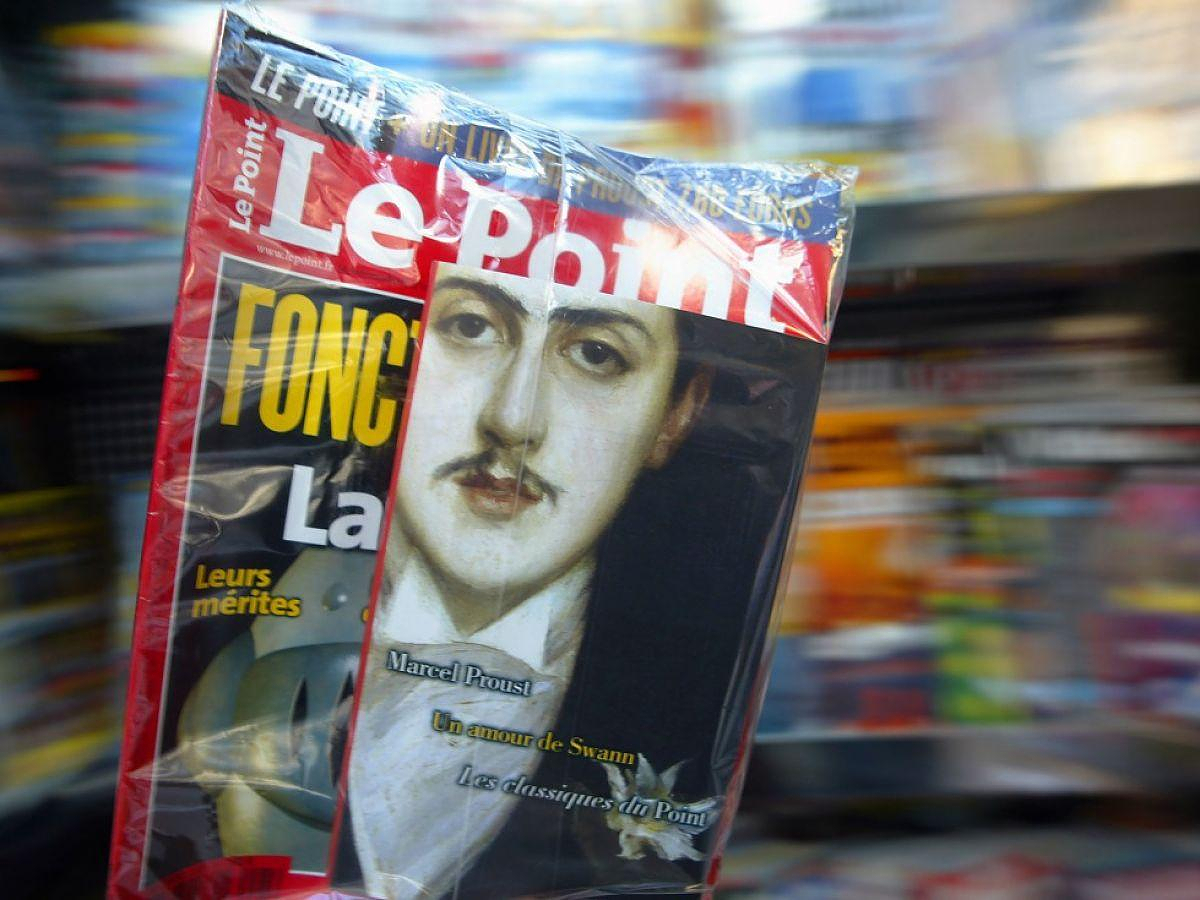The archaeologist and former Egyptian antiquities minister Sahi Hawass is never at a loss for big words. Accordingly, his boast is heard: "I stuck my head in to see what was inside the sarcophagus: A beautiful mummy of a man completely covered in layers of gold."
Egypt has presented new archaeological finds from the ancient necropolis of Saqqara. The more than 4,000-year-old finds at the necropolis south of Cairo are the gold-decorated mummy and four tombs, including that of a "secret guardian" of the ancient Egyptian king, Hawass said.
The finds are therefore from the years 2500 to 2100 BC and were assigned to the fifth and sixth pharaoh dynasty. The largest of the four tombs was built for a priest and overseer named Khnumddschedef. Decorated with scenes of everyday life at the time, it was discovered in the pyramid complex of Unas, the last king of the Fifth Dynasty, who reigned some 4,300 years ago.
Another tomb belonged to Meri, who, according to Hawass, served as the pharaoh's "secret guardian." It was a priestly title held by a high-ranking palace official, giving him the right to perform certain religious rituals.
The third tomb was built for a priest named Messi in the pyramid complex of Pharaoh Pepi I, and the fourth belonged to a judge and scribe named Fetek. The head of Egypt's Supreme Antiquities Council, Mostafa Wasiri, said Fetek's tomb contained the "largest statues" ever discovered in the area.
The Saqqara Necropolis is a vast necropolis on the site of Egypt's former capital, Memphis. The Unesco World Heritage Site includes more than a dozen pyramids and ancient Christian Copt monasteries.
The mummy, the discovery of which has now been announced, was found in a limestone sarcophagus. The coffin was found in a 15 meter deep ditch and was sealed "just like the ancient Egyptians had left it 4,300 years ago".
Decorated with gold leaf, the mummy is the remains of a man named Hekashepes. Hawass stressed that it was one of the best-preserved mummies of a non-royal body ever found in Egypt.
Just a few days ago, results were presented for a 2,300-year-old mummy, the so-called "Golden Boy". X-raying with the computer tomograph revealed magnificent accessories. Among other things, a golden tongue amulet was placed in the mouth of the deceased to enable him to speak in the afterlife.
Egypt has presented a large number of archaeological finds in recent years. Critics warn that this is more about media attention than sound research.
In fact, after years of political instability and the corona pandemic, Egypt, which is stuck in an economic crisis with its archaeological treasures, wants to boost tourism, which is so important for the country. The long-planned opening of the new Egyptian Museum in Cairo, which is now scheduled to take place this year after being postponed several times, should also be seen in this context.
By 2028, Egypt aims to reach 30 million tourists a year. That is 13 million more per year than before the corona pandemic.
"Aha! Ten minutes of everyday knowledge" is WELT's knowledge podcast. Every Tuesday and Thursday we answer everyday questions from the field of science. Subscribe to the podcast on Spotify, Apple Podcasts, Deezer, Amazon Music, among others, or directly via RSS feed.

 His body naturally produces alcohol, he is acquitted after a drunk driving conviction
His body naturally produces alcohol, he is acquitted after a drunk driving conviction Who is David Pecker, the first key witness in Donald Trump's trial?
Who is David Pecker, the first key witness in Donald Trump's trial? What does the law on the expulsion of migrants to Rwanda adopted by the British Parliament contain?
What does the law on the expulsion of migrants to Rwanda adopted by the British Parliament contain? The shadow of Chinese espionage hangs over Westminster
The shadow of Chinese espionage hangs over Westminster What High Blood Pressure Does to Your Body (And Why It Should Be Treated)
What High Blood Pressure Does to Your Body (And Why It Should Be Treated) Vaccination in France has progressed in 2023, rejoices Public Health France
Vaccination in France has progressed in 2023, rejoices Public Health France Food additives suspected of promoting cardiovascular diseases
Food additives suspected of promoting cardiovascular diseases “Even morphine doesn’t work”: Léane, 17, victim of the adverse effects of an antibiotic
“Even morphine doesn’t work”: Léane, 17, victim of the adverse effects of an antibiotic Collection of booklet A stalls in March
Collection of booklet A stalls in March Kering expects a 40 to 45% drop in operating profit in the first half
Kering expects a 40 to 45% drop in operating profit in the first half Smartphones, televisions, household appliances… MEPs adopt a “right to repair”
Smartphones, televisions, household appliances… MEPs adopt a “right to repair” Fintechs increasingly focused on business services
Fintechs increasingly focused on business services The standoff between the organizers of Vieilles Charrues and the elected officials of Carhaix threatens the festival
The standoff between the organizers of Vieilles Charrues and the elected officials of Carhaix threatens the festival Strasbourg inaugurates a year of celebrations and debates as World Book Capital
Strasbourg inaugurates a year of celebrations and debates as World Book Capital Kendji Girac is “out of the woods” after his gunshot wound to the chest
Kendji Girac is “out of the woods” after his gunshot wound to the chest The Court of Auditors scrutinizes the management and projects of the Center Pompidou
The Court of Auditors scrutinizes the management and projects of the Center Pompidou Skoda Kodiaq 2024: a 'beast' plug-in hybrid SUV
Skoda Kodiaq 2024: a 'beast' plug-in hybrid SUV Tesla launches a new Model Y with 600 km of autonomy at a "more accessible price"
Tesla launches a new Model Y with 600 km of autonomy at a "more accessible price" The 10 best-selling cars in March 2024 in Spain: sales fall due to Easter
The 10 best-selling cars in March 2024 in Spain: sales fall due to Easter A private jet company buys more than 100 flying cars
A private jet company buys more than 100 flying cars This is how housing prices have changed in Spain in the last decade
This is how housing prices have changed in Spain in the last decade The home mortgage firm drops 10% in January and interest soars to 3.46%
The home mortgage firm drops 10% in January and interest soars to 3.46% The jewel of the Rocío de Nagüeles urbanization: a dream villa in Marbella
The jewel of the Rocío de Nagüeles urbanization: a dream villa in Marbella Rental prices grow by 7.3% in February: where does it go up and where does it go down?
Rental prices grow by 7.3% in February: where does it go up and where does it go down? Europeans: “All those who claim that we don’t need Europe are liars”, criticizes Bayrou
Europeans: “All those who claim that we don’t need Europe are liars”, criticizes Bayrou With the promise of a “real burst of authority”, Gabriel Attal provokes the ire of the opposition
With the promise of a “real burst of authority”, Gabriel Attal provokes the ire of the opposition Europeans: the schedule of debates to follow between now and June 9
Europeans: the schedule of debates to follow between now and June 9 Europeans: “In France, there is a left and there is a right,” assures Bellamy
Europeans: “In France, there is a left and there is a right,” assures Bellamy These French cities that will boycott the World Cup in Qatar
These French cities that will boycott the World Cup in Qatar Football: VAFC supporters are ironic after their descent into National
Football: VAFC supporters are ironic after their descent into National Tennis: Carlos Alcaraz should play in Madrid
Tennis: Carlos Alcaraz should play in Madrid Football: victim of discomfort in the middle of a match in mid-April, Evan Ndicka will resume training with AS Roma
Football: victim of discomfort in the middle of a match in mid-April, Evan Ndicka will resume training with AS Roma Ligue 1: PSG almost champion, OM, shock for the C1… 5 reasons to follow an exciting evening
Ligue 1: PSG almost champion, OM, shock for the C1… 5 reasons to follow an exciting evening


















